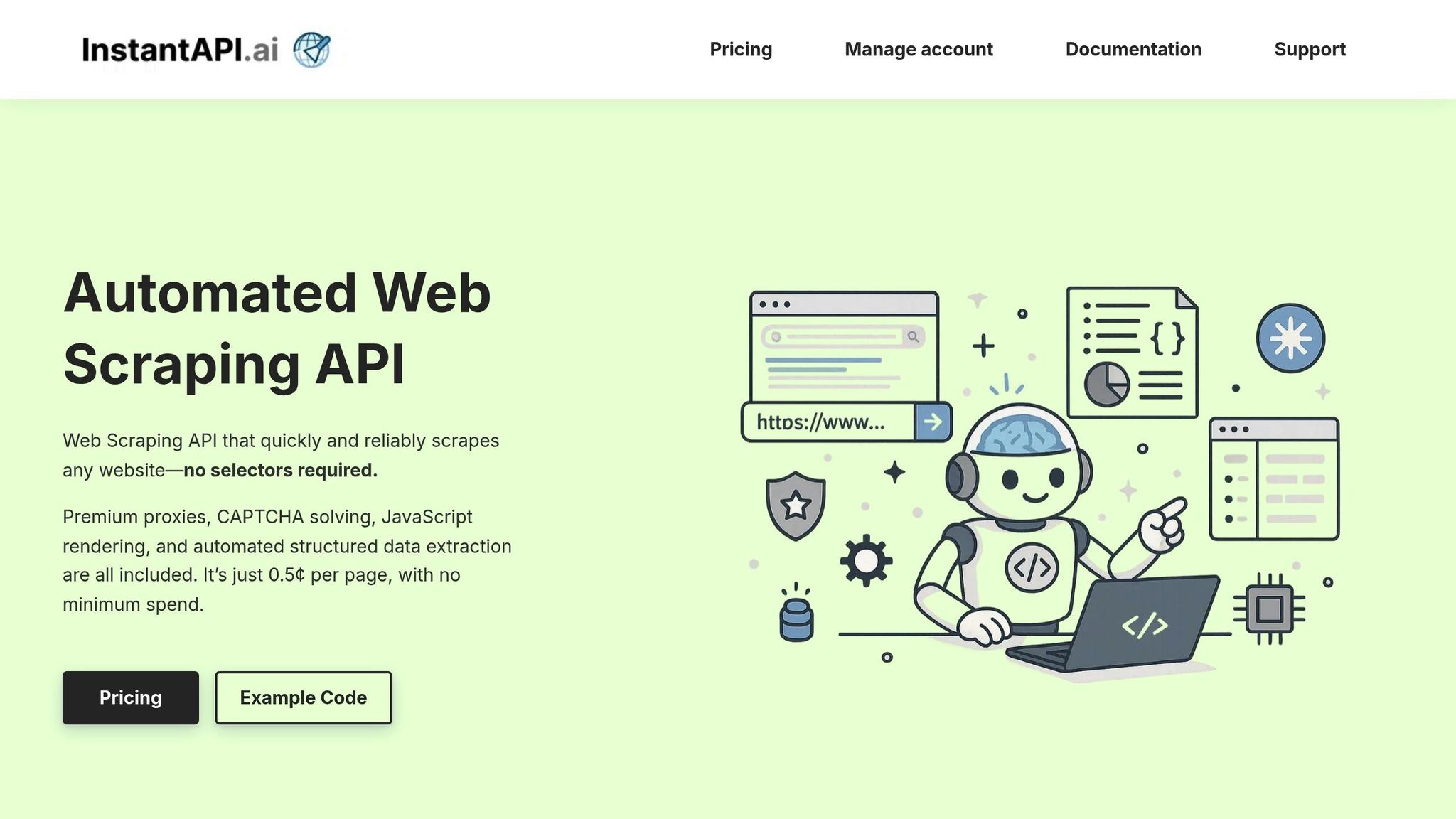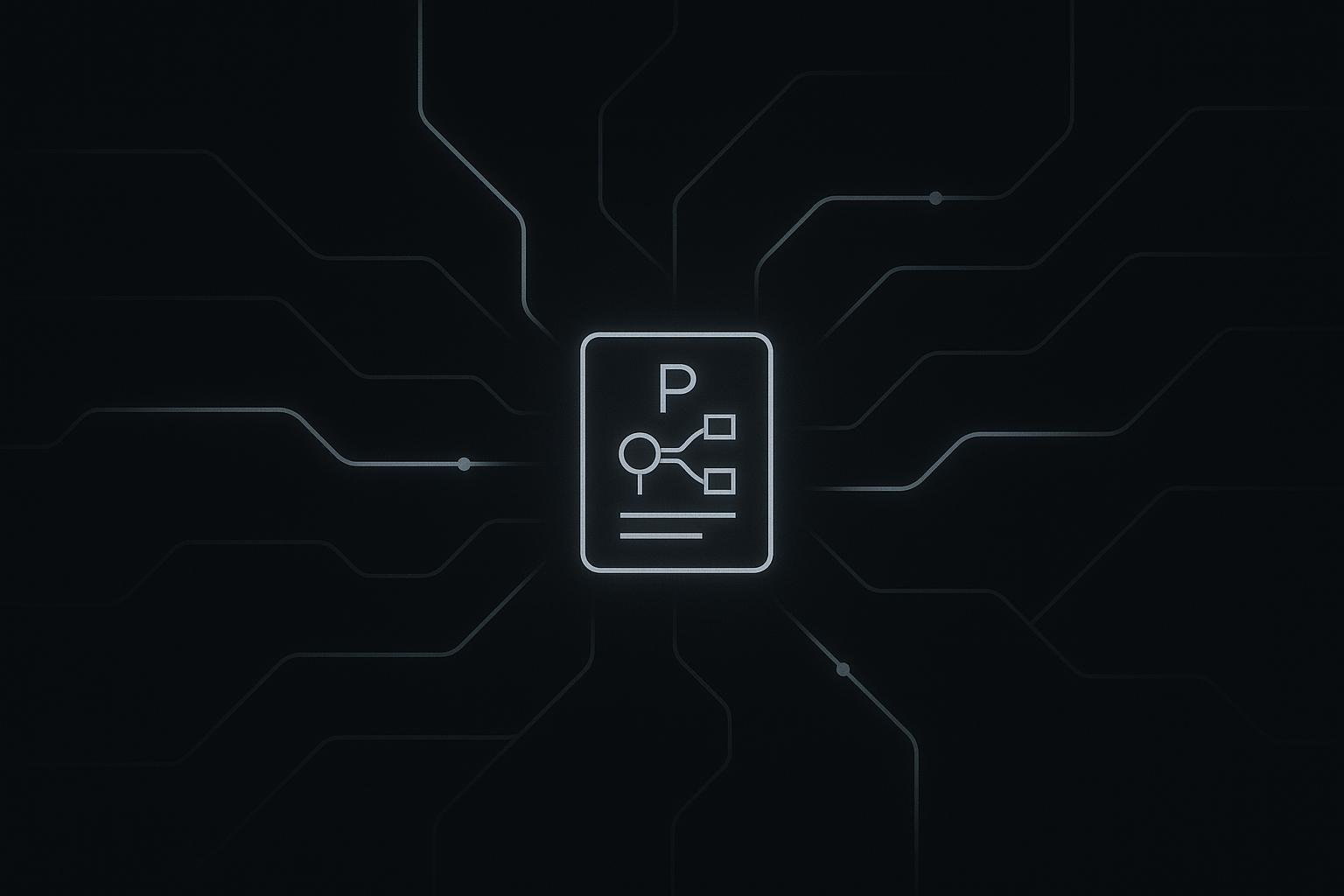Web scraping is changing how legal professionals collect and use data by automating tasks like case research, compliance tracking, and market analysis. This saves time, reduces errors, and provides deeper insights into legal and business trends.
Key Takeaways:
- Top Uses: Case research, compliance monitoring, contract analysis, due diligence, and market intelligence.
- Challenges: Legal and ethical boundaries, privacy rules (e.g., CCPA), and technical hurdles like CAPTCHAs and dynamic content.
- Solutions: Tools like InstantAPI.ai help with data collection, offering features like proxy rotation, JavaScript rendering, and CAPTCHA-solving.
- Best Practices: Follow legal guidelines, respect privacy, and use compliant scraping methods.
Web scraping can streamline legal workflows, but staying within legal and ethical boundaries is critical.
Web Scraping Uses in Legal Work
Finding and Analyzing Case Law
Web scraping helps gather case law from legal databases and journals, creating a centralized repository of precedents while delivering real-time updates on judgments. This approach allows legal professionals to:
- Monitor court decisions as they happen
- Avoid the delays of manual searches
Next, let’s look at how automated tools can help you stay on top of regulatory changes.
Tracking Legal Requirements
Staying compliant with evolving regulations is critical. Web scraping simplifies this process by automating the monitoring of regulatory updates. It can:
- Provide instant alerts on new rules or amendments
- Deliver immediate access to court decisions
- Track changes in compliance requirements automatically
Let’s move on to how web scraping supports market research and client insights.
Market Research and Client Analysis
Web scraping is a powerful tool for gathering market intelligence, helping legal teams stay competitive and informed. By collecting data on trends, competitor strategies, client feedback, and more, it can:
- Compile insights on emerging market trends
- Monitor mentions of clients and prospects
- Identify potential new revenue opportunities
Tutorial: Kimberly Fessel - It's Officially Legal so Let's Scrape ...
Legal and Ethical Requirements
Web scraping can simplify compliance monitoring and research, but it must adhere to legal, privacy, and ethical standards.
Understanding the legal landscape for web scraping is essential for legal professionals. While laws and precedents exist, applying them to evolving scraping methods can be complex.
Legal Boundaries
Although laws governing scraping are established, enforcing them against new practices remains a challenge. Plaintiffs increasingly rely on state-law breach-of-contract claims rather than CFAA (Computer Fraud and Abuse Act) cases. Legal teams should carefully review contract terms and evaluate potential CFAA risks.
Privacy Rules
The CCPA (California Consumer Privacy Act) outlines specific requirements when collecting personal data from California residents. These include notifying users, providing opt-out options, honoring deletion requests, and ensuring no discriminatory practices based on privacy choices.
Ethical Considerations
To maintain ethical standards, respect individuals' privacy by limiting scraping to data obtained with user consent or other lawful means. This approach aligns with professional ethical responsibilities.
sbb-itb-f2fbbd7
Technical Hurdles and Solutions
Once legal and ethical boundaries are set, legal teams must address the technical challenges that can disrupt data collection. These hurdles can complicate the process of scraping data, but solving them is essential for consistent and compliant results.
Common Technical Problems
Legal teams often encounter these four technical challenges:
- Dynamic JavaScript content on court websites
- Anti-scraping measures like CAPTCHAs, IP blocks, and fingerprinting
- Unexpected site layout updates that break scripts
- Handling large volumes of documents efficiently
Problem-Solving Methods
Here’s how to tackle these issues:
- Use headless browsers like Puppeteer or Selenium to render JavaScript-heavy pages. This is especially important for keeping up with case updates.
- Rotate residential proxies and implement CAPTCHA solvers to maintain uninterrupted access to legal databases.
- Employ flexible parsers with CSS or XPath fallbacks, paired with automated alerts for layout changes, to ensure consistent document collection.
- Process large volumes of data efficiently by using asynchronous, parallel requests.
Compliance Checks
Always respect robots.txt files and website terms of service. Throttle requests to avoid triggering rate limits and ensure your methods remain compliant.
Tools and Methods for Legal Data Collection
How to Pick the Right Tools
When choosing tools for legal data collection, focus on features that tackle common challenges like dynamic content, anti-scraping defenses, and managing large-scale data needs. Look for tools that offer:
- A high success rate for reliable data retrieval
- JavaScript rendering to handle dynamically loaded pages
- Automatic proxy rotation with CAPTCHA-solving capabilities
- Global geotargeting for access across jurisdictions
- Customizable data schemas for flexible outputs
- Support for unlimited parallel requests to save time
InstantAPI.ai is a strong option that checks these boxes.
Using InstantAPI.ai

InstantAPI.ai is designed with legal workflows in mind. It offers a 99.99% success rate and access to 65 million rotating IPs across 195 countries. With features like automatic residential and stealth proxy rotation, headless Chromium-based page rendering, and support for custom data schemas, it simplifies complex data collection tasks.
Juan from Scalista GmbH highlights its ease of use and speed, which allow teams to concentrate on their main objectives. At $0.005 per page, it’s affordable for both small practices and large legal departments.
Safety and Compliance Measures
After selecting and integrating the right tools, ensure compliance by:
- Reviewing and following relevant laws and each website’s terms of service
- Handling personal or sensitive data in line with privacy regulations
- Using proxy rotation and CAPTCHA-solving tools responsibly to stay within rate limits and avoid detection
Wrapping It Up
Key Takeaways
Web scraping transforms how legal professionals handle research, risk management, and compliance. By automating data collection, it allows teams to gather information efficiently for case research, monitor market trends, and stay on top of regulatory requirements. This approach not only saves time but also provides deeper insights.
Staying Within Legal Boundaries
It's essential to align technical practices with privacy laws, terms-of-service agreements, and solid data governance policies. These safeguards ensure your scraping efforts remain compliant and scalable.
Next Steps
- Evaluate Your Workflows: Compare your current processes with this guide's focus areas - research methods, ethical considerations, technical setup, and tool usage.
- Plan for Governance: Develop a detailed data governance strategy to maintain compliance and sustain effective operations as you scale.


